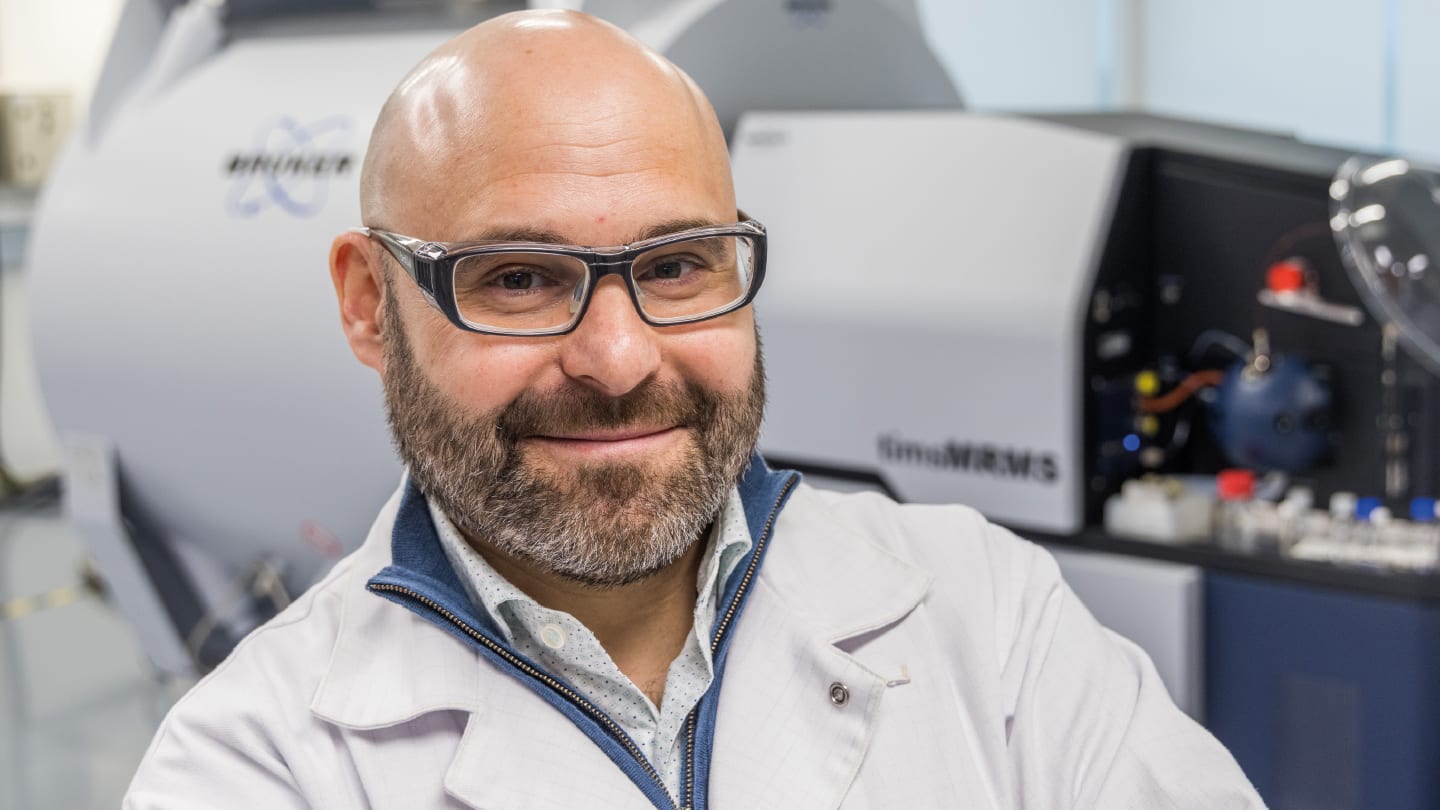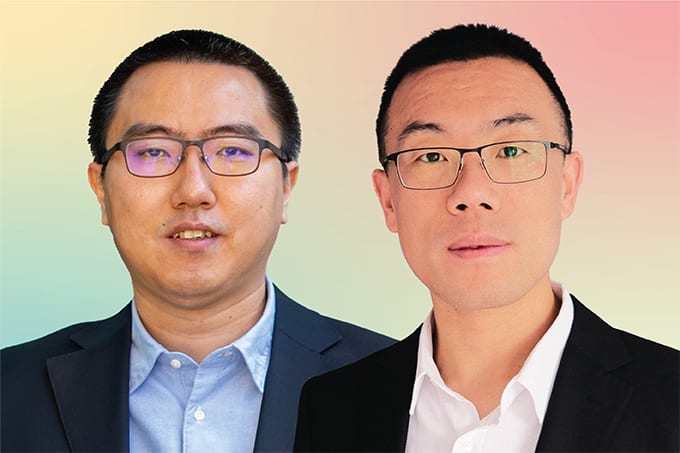The inaugural Transition Analytics for Decarbonization (TAD) conference will take place on 1–3 October 2025 at the French National Centre for Scientific Research (CNRS) in Paris. Bringing together experts from across academia and industry, the event will explore how analytical science can accelerate the global shift to a low-carbon future.
Discussions will center on six pressing themes: CO₂ capture, utilization, and storage; recycling and end-of-life of plastics; photovoltaic solar energy; decarbonized hydrogen; bioresources; and electrical storage and batteries – each highlighting the crucial role of measurement and innovation in tackling climate challenges.
Here, we speak with conference Chair Pierre Giusti, Analytical Chemistry specialist at TotalEnergies and part-time Researcher at CNRS, who shares his perspective on advancing analytical methodologies that can help quantify progress, identify limitations, and guide the development of sustainable energy solutions.

Please tell me a bit about your background and how you became involved in the TAD conference
I’m one of many analytical chemists who’ve had the opportunity to apply our science across a wide range of domains. My academic background is in organic chemistry, but early in my career, I was drawn toward chromatographic techniques coupled with mass spectrometry. Over the years, I’ve worked on the development of speciation methods in increasingly complex matrices.
More recently, my research has shifted toward topics directly linked to decarbonization and sustainability. This transition has opened new scientific questions and collaborative opportunities, particularly in areas like biomass conversion into fuels, hydrogen, energy storage, and recycling plastics. Throughout this evolution, my core motivation has remained the same: to understand matter at its most fundamental level and to contribute to solving real-world challenges.
My involvement in the TAD conference stems from a desire to help create the kind of forum I’ve long wished existed, a space where decarbonization challenges are addressed across multiple domains, and where all analytical techniques are considered valuable and complementary. TAD offers a rare opportunity to bring together diverse expertise, and I’m proud to be part of it.
What inspired the creation of the TAD conference, and why is this the right moment to launch it?
The idea for TAD emerged from a shared observation: while analytical chemistry is essential to many sustainability efforts, it’s rarely given a central role in strategic discussions. Existing conferences tend to focus either on a specific technique or a single application domain, which can limit the exchange of ideas and hinder interdisciplinary collaboration.
We wanted to do things differently. TAD is structured around six major societal challenges, ranging from CO₂ capture to battery technologies, each explored in its own half-day session. Rather than promoting one analytical approach per theme, we’ve designed the program to embrace all relevant techniques. Whether it’s for example: chromatography, spectroscopy, electrochemistry, or imaging, we believe that complementarity is key to solving complex problems!
I often refer to the saying: “If all you have is a hammer, every problem looks like a nail.” In analytical science, this mindset can be limiting. TAD was created to challenge that notion, to invite scientists to step outside their methodological mindsets and discover new ways of thinking. By fostering dialogue across disciplines, we hope to accelerate innovation and build a stronger, more connected analytical community.
The timing couldn’t be more appropriate. With climate goals becoming increasingly urgent and technological solutions growing more complex, we need to mobilize every analytical resource available. TAD is our response to that need: a platform for collaboration, inspiration, and scientific progress.
Why is it vital to focus on analytical chemistry’s role in the energy transition and sustainable development? Is its role underappreciated?
Analytical chemistry is often described as a support function, but it’s a strategic enabler of innovation. It provides the data and insight needed to develop, validate, and optimize technologies that are critical to the energy transition, from new battery materials and hydrogen production processes to plastic recycling and biomass conversion.
Its strength lies in its ability to make the invisible visible. Analytical techniques allow us to understand transformations at the molecular level, detect trace contaminants, and assess performance under real-world conditions. Without this level of detail, we would be unable to measure progress, identify inefficiencies, or ensure safety and reliability.
Despite its importance, analytical chemistry remains underappreciated in many sustainability discussions. This is partly due to the fragmentation of the field. Techniques are often developed in disciplinary silos, and their broader relevance can be overlooked. TAD seeks to change that by placing analytical science at the heart of the conversation and demonstrating its value across multiple domains.
Moreover, no single technique can address the full complexity of decarbonization. We need a diverse and integrated analytical toolbox, and we need scientists who are willing to collaborate across disciplines. TAD encourages this mindset, promoting openness, complementarity, and innovation. In short, analytical chemistry is not just relevant, it’s indispensable to build a sustainable future.
The program is structured around six themes – how were these chosen, and what unites them?
The six themes at the heart of the TAD conference were carefully selected by our scientific committee, which brings together academic and industrial leaders from three joint laboratories involving CNRS, several universities, and TotalEnergies. This collaborative structure ensured that the program would reflect both the latest scientific priorities and the real-world needs of industry.
Each theme was chosen for its direct relevance to the decarbonization of energy and sustainable development. Our selection was also informed by the CNRS’s PEPR (Programme et Équipement Prioritaires de Recherche) funding initiatives, which highlight national priorities in research and innovation for the energy transition.
Rather than focusing on a single sector or technology, we wanted to reflect on the diversity of real-world problems where analytical chemistry is indispensable. Each theme, ranging from CO₂ capture and utilization, end-of-life and recycling of plastics, photovoltaic solar energy, decarbonized hydrogen, bioresources, to electrical storage and batteries, represents a domain where innovation is both critically needed and analytically demanding. These areas were chosen because they are at the forefront of decarbonization efforts and each presents unique scientific questions that require advanced analytical solutions.
What unites these themes is their shared reliance on analytical science to unlock progress. Whether it’s understanding the fate of carbon in storage systems, tracking degradation in battery materials, or quantifying trace contaminants in recycled plastics, robust analytical data is the common thread. By bringing these domains together under one roof, TAD aims to foster cross-disciplinary dialogue, allowing breakthroughs in one area to inspire solutions in another. This structure reflects our conviction that the future of sustainable innovation depends on both the depth and breadth of analytical expertise.
Are there particular sessions or events you are most excited about?
There are several aspects of TAD that I find particularly exciting. First and foremost, the keynote lectures stand out as highlights. We are fortunate to welcome internationally recognized experts, such as Christian Serre, Thomas Jaramillo, Daniel Lincot, Hubert Girault, Yan-Yan Hu and many others from academia and industry – 15 in total (!) – who will share their insights on topics ranging from advanced materials for energy to the latest developments in analytical chemistry for complex organic mixtures. These talks promise to set the stage for rich discussions and help define the analytical challenges specific to each session.
I’m also looking forward to the thematic sessions dedicated to each of the six domains. These sessions are designed not only to showcase cutting-edge research, but also to encourage open discussion of analytical challenges and opportunities. The format allows for both in-depth technical presentations and broader exchanges between participants from different backgrounds.
Beyond the formal program, I’m enthusiastic about the networking opportunities: poster sessions, roundtables, and informal gatherings, where spontaneous conversations often lead to new collaborations and ideas. TAD’s structure is intentionally designed to maximize these moments of exchange, which I believe are just as valuable as the scheduled talks.
How are technology providers and instrument manufacturers being integrated into the event, and what role do you see industry playing in this space?
Technology providers and instrument manufacturers are fully integrated into TAD, not just as exhibitors, but as genuine partners in the scientific dialogue. They are invited to present their latest innovations, demonstrate new analytical solutions, and engage directly with researchers and end-users throughout the conference. We are especially grateful to these companies for their support as sponsors, which has been instrumental in allowing us to offer a reasonable registration fee for all participants. Their commitment is essential to making TAD accessible and impactful, and we sincerely thank them for it.
We also want to express our gratitude to the CNRS, which is hosting us at its headquarters. The conference will be opened by CNRS President Antoine Petit on Wednesday, October 1st, 2025, at 8:45 am, a strong signal of the importance of analytical science for the national research agenda.
Manufacturers, and particularly technology providers, play a dual role at TAD. On one hand, they are key users of analytical data, driving demand for robust, scalable, and cost-effective solutions. On the other hand, they are often at the forefront of developing new instrumentation and methodologies, frequently in partnership with academic and public research organizations.
But what makes TAD unique is that it offers manufacturers a rare opportunity to listen directly to the academic and industrial scientific community from six major domains. Rather than responding to isolated requests from individual clients or partners, they will hear the collective needs and expectations of the entire community. This is particularly valuable for them, as it will help inform their long-term development roadmaps for each domain. By embedding instrument manufacturers into the fabric of TAD, we aim to foster genuine collaboration, encouraging co-development of new techniques, sharing of case studies, and open discussion of real-world analytical needs.
Ultimately, we believe that progress in decarbonization and sustainability will depend on strong, ongoing partnerships between academia, industry, and technology providers. TAD is designed to be the place where these connections are made and strengthened, for the benefit of all.
What do you hope participants will take away from the first edition, and how do you see TAD evolving in the years to come?
My hope is that participants leave TAD with a renewed sense of possibility, armed with new knowledge, fresh perspectives, and valuable connections. I want attendees to discover analytical approaches they hadn’t considered before, to see how challenges in one domain can illuminate solutions in another, and to feel inspired to pursue new collaborations.
Looking ahead, if the first edition proves to be the success we hope it will be, I see TAD evolving into a recurring, international event that continues to expand its reach and impact. Future editions could include emerging topics reflecting the ever-changing landscape of energy production and analytical science. We also hope to broaden participation, welcoming more voices from different regions and sectors.
Ultimately, our vision is for TAD to become a reference point: a place where the analytical community of the energy field gathers to share, learn, and drive progress toward a more sustainable future. If we can help spark even a few new ideas or partnerships that accelerate decarbonization, I would consider that a great success.




